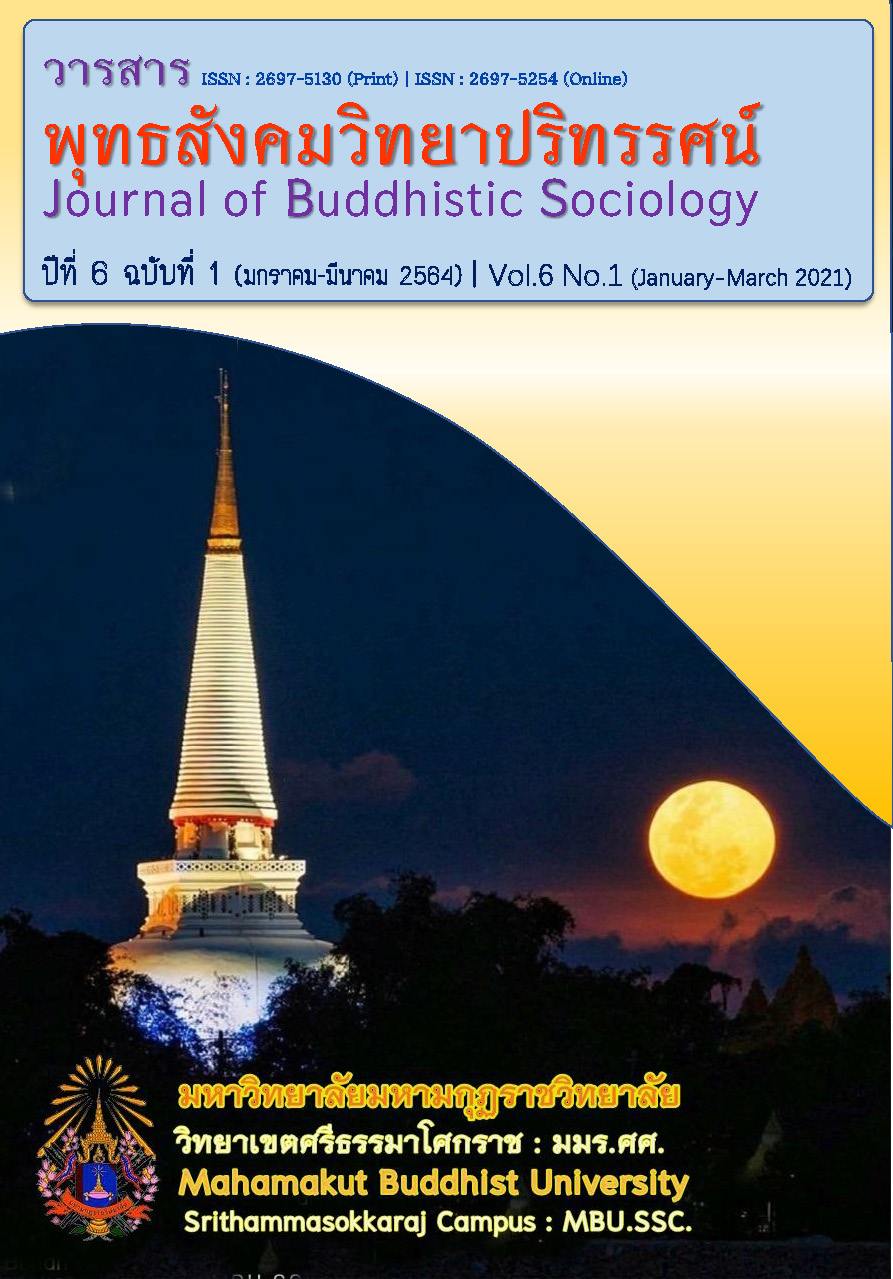THE ANALYSIS OF WORK MOTIVATION FACTORS AMONG EMPLOYEES OF COMMERCIAL BANK IN SURAT THANI PROVINCE
Main Article Content
Abstract
The purpose of this research was to analyze the second confirmatory factor of motivation among bank employees in Surat Thani province. The sample group used in the research was 512 employees of Siam Commercial Bank of Thailand working in branches of Surat Thani province. The sample group was selected by using stratified random sampling according to the proportion of bank groups with 11 banks. The research instrument was a questionnaire. Data were analyzed using second order confirmatory element analysis.
The results showed that:
Motivational Factors (MOTIV) and Hygiene Factors (HYGIN) had the factor loading of 0.37 and 0.36 respectively. The factor loading of the motivation factors was arranged in descending order of their value as follows: 1) the job characteristics 2) responsibility 3) job progress 4) job success and 5) recognition. The first had the loading factor equal to 2 variables with the value of 0.79 followed by 0.76 0.72 and 0.69, respectively. For the Hygiene factors, the factor loading was arranged in descending order of their value as follows: 1) policy and administration 2) personal life condition 3) work environment 4) compensation and 5) relationship with colleagues. The values of factor loading were 0.78, 0.74, 0.72, 0.71 and 0.63, respectively. The congruence of the data and the empirical data were found to be consistent by testing the Chi-square = 53.144, df = 30,
p-value = 0.006 with statistical significance. Considering the Goodness-of-Fit Index (GFI) = 0.979, Adjusted Goodness of Fit Index (AGFI) = 0.961, and Standard Root Mean Square Residual (RMSEA) = 0.039, it indicates that the model is consistent with the empirical data.
Article Details
References
ฐิติมา ชูเชิด. (2561). เมื่อคนเริ่มไม่ใช้เงินสด นโยบายการเงินจะได้รับผลกระทบอย่างไร? ธนาคารแห่งประเทศไทย. เรียกใช้เมื่อ 20 พฤษภาคม 2562 จาก https://www.bot.or.th/Thai/ResearchAndPublications/articles/Pages/Article_04Jan2019.aspx.
ธาริฑธิ์ ปั้นเปี่ยมรัษฎ์. (2561). สำรวจภูมิคุ้มกันระบบธนาคารพาณิชย์ไทยกับปัจจัยเสี่ยงปี 2562. เรียกใช้เมื่อ 15 ธันวาคม 2562 จาก https://www.bot.or.th/Thai/ResearchAndPublications/articles/Pages/Article_26Dec2018.aspx.
แบรนอินไซด์. (2561). 4 ปีผ่านไปธนาคารในไทยลดสาขากว่า 300 แห่ง แล้วพนักงานแบงก์-ลูกค้าต้องปรับตัวอย่างไร? เรียกใช้เมื่อ 22 มกราคม 2562 จาก https://brandinside.asia/bank-branch-decrease-digital-banking-growth/.
แบรนอินไซด์. (2562). ทำไม SCB ต้องลดสาขา-พนักงาน? คำตอบอยู่ที่การปรับโครงสร้างครั้งใหญ่ในช่วง 3 ปีจากนี้. เรียกใช้เมื่อ 22 มกราคม 2562 จาก https://brandinside.asia/scb-transformation-2020-scb-vision/.
สมิตา เอื้อฤดีพร. (2561). การชำระเงิน เรื่องไม่เล็กที่ธุรกิจมักมองข้าม (ตอนที่ 1) ธนาคารแห่งประเทศไทย. เรียกใช้เมื่อ 20 พฤษภาคม 2562 จาก https://www.bot.or.th/Thai/ResearchAndPublications/articles/Pages/Article_11Jun2018.aspx
Chileshe, N. and Haupt, T. C. (2010). The effect of age on the job satisfaction of construction workers. Journal of Engineering, Design and Technology, 8(1), 107-118.
Ghodrati, H., and Tabar, R. G. (2013). A study on effective factors on employee motivation. Management Science Letters, 3(1), 1511-1520.
Hair, J. F., Black, W. C., Babin, B. J., & Anderson, R. E. (2019). Multivariate data analysis (8 ed.). Upper Saddle River, New Jersey: Prentice Hall.
Herzberg, F. (1987). One More Time: How do You Motivate Employees? Harvard Business Review, September – October, 5-16.
Herzberg, F., Mausner, B., & Snydermann B. (1959). The motivation to work. New York: Wiley.
Liu, S., Onwuegbuzie, A. J. (2014). Teachers’ Motivation for Entering the Teaching Profession and Their Job Satisfaction: A Cross-Cultural Comparison of China and Other Countries. Learning Environ Res, 17, 75-94.
Manjunath, S., and Vijayalakshmi, U. (2014). Critical Analysis of Motivators and Hygiene Factors with Special Reference to Employees of Private and Public Sector Banks in India. International Journal in Management and Social Science, 2(6), 28-32.
Osabiya, BJ. (2015). The effect of employees’ motivation on organizational performance. Journal of Public Administration and Policy Research, 7(4), 62-75.
Osborne, J. W., and Costello, A. B. (2004). Sample size and subject to item ratio in principal components analysis. Practical Assessment, Research and Evaluation, 9(11), 126-131.
Petcharack, P. (2014). A Comparative Analysis of factors determining motivational level of employees working in commercial banks in Kohat. International Journal of Business and Management, 5(12), 1833-3850.
Rožman, M., Treven, S., and Čančer, V. (2017). Motivation and Satisfaction of Employees in the Workplace. Business Systems Research, 8(2), 14-25.
Sarpong, L. (2016). Effects of Motivation on the Performance of Employees of Ecobank Ghana Limited : Knust Branch and Stadium Branch. Journal of Business Theory and Practice, 4(1), 111–124.
Yusoff, W.F.W. (2013). HERZBERG’S Two Factors Theory on Work Motivation: Does its Work for Today’s Environment. Global Journal of Commerce and Management Perspective, 2(5), 18-22.
Zámečník, R. (2014). The measurement of employee motivation by using multi-factor statistical analysis. Procedia - Social and Behavioral Sciences, 109, 851–857.


